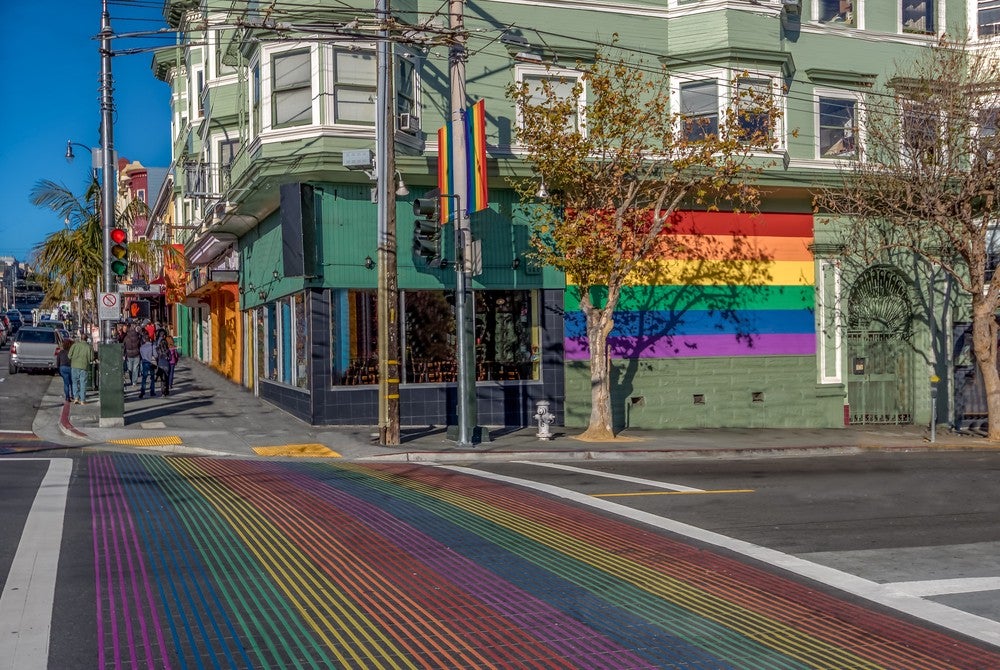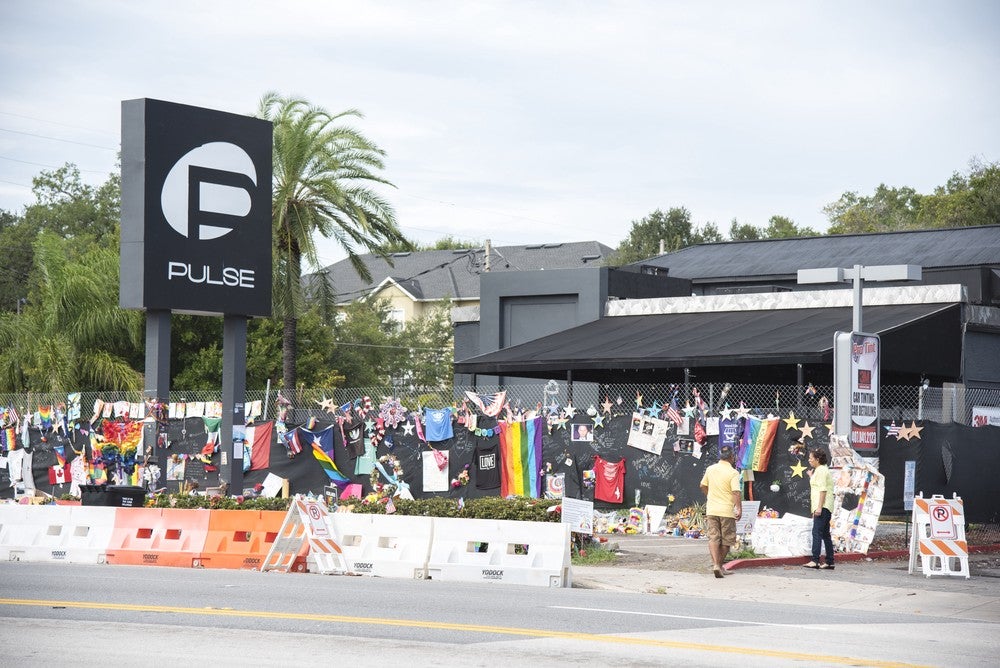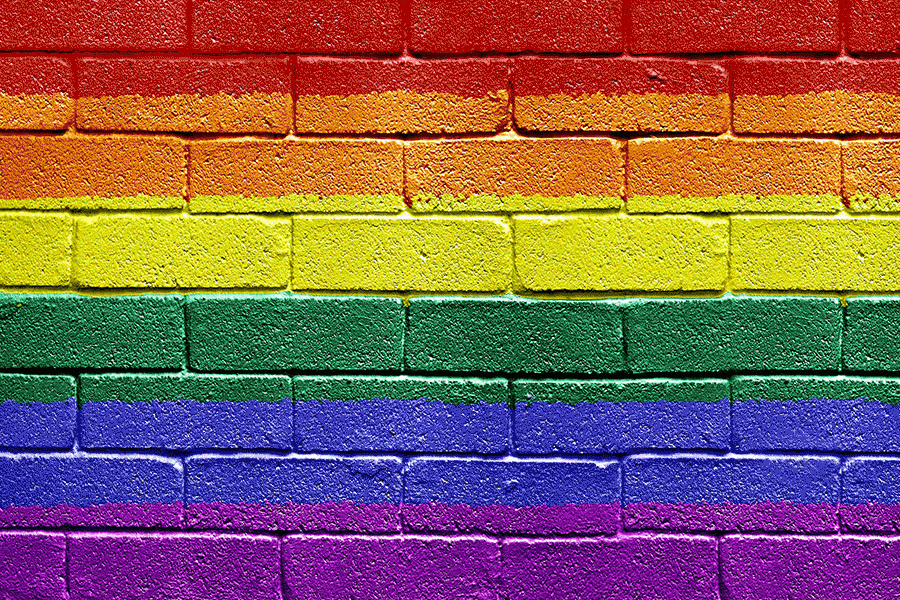“Another hardcore gay bar bites the gag ball,” SFist wrote back in 2013.
It was eulogizing KOK BAR, the latest in a string of establishments that had recently changed ownership in San Francisco’s South of Market (SOMA) neighborhood. For decades SOMA was best known for its sex clubs and leather dungeons, but it’s since become home to countless craft cocktail bars.
KOK BAR — previously known as The Ramrod, My Place, Cip and Chaps II — was a boy bar of the leather and chain-link fence variety. Driftwood, its replacement, is a nautical themed watering hole reminiscent of a J. Crew with a wooden phallus behind glass in the restroom calling to mind a kinkier past. New owner Chris Milstead cheekily refers to Driftwood as “straight-friendly” and a place to find “something for everyone.”
To some, though, spaces “for everyone” represent the end of an era, when sanctuaries like the KOK BAR served as bastions of separatist gay culture that thrived throughout the 1970s and 1980s in historically gay neighborhoods like Greenwich Village in Manhattan, Boystown in Chicago and West Hollywood in L.A.
Or “gayborhoods” as The New York Times called them last month in a story entitled “There Goes the Gayborhood.” It was taken from a 2014 book of the same title by Amin Ghaziani, an associate professor of sociology at the University of British Columbia, Vancouver. Both the Times and Ghaziani investigated the same “straightening out” of America’s historically gay districts — and the implications of doing so.
Gentrification is certainly at play here. The infamous San Vicente Inn in West Hollywood, for example, which for many years operated as a mens-only, clothing-optional “live-and-let-live” gay motel, was purchased in 2013 by Sunset Tower owner Jeff Klein, who immediately evicted unsavory residents, eliminated the clothing-optional policy and transformed the nudist West Hollywood drug den into a fancy boutique hotel, which is now — you guessed it — a “space for everyone.”

Perhaps even more significant than gentrification is millennials’ perception of the LGBTQ struggle — or lack thereof. Younger gays and lesbians have come of age in a much different world than previous generations of LGBT people. That being the case, Ghaziani says, many young people no longer feel a need to huddle amongst themselves.
I recently spoke with Ghaziani about how the gayborhood was born during World War II, why straight allies don’t automatically have a right to claim a stake in the gayborhood and the renewed relevance of “safe spaces” in a “post-gay,” post-Orlando era.

Define “Gayborhood.”
A gay neighborhood, or gayborhood as I like to call them, has four features. First, it has a distinct geographic focal point. Locals and tourists can point it out on a map, usually by singling out one or two specific streets. Second, Gayborhoods have a unique culture. LGBTQ people set the tone, character or complexion of the area, which is why symbols like the rainbow flag are visible as you walk along the streets and also why ritual events like the Pride parade often take place there. These cultural markings allow LGBTQ people to feel visible and connected with one another.
Third, gayborhoods are residential, meaning there’s a statistical concentration of same-sex households. Everyone who lives there doesn’t self-identify as LGBTQ, of course, but many people certainly do. Fourth, gayborhoods have a cluster of commercial spaces and nonprofit organizations — think gay bars, LGBT community centers, HIV/AIDS social service organizations, and Metropolitan Community Churches — that target the needs of sexual minorities, specifically.
What’s the value or significance of gayborhoods to the gay community?There are many benefits that gay districts provide for LGBTQ people. They allow us to find each other for friendship, fellowship, sex and love. Gayborhoods incubate unique cultures, political perspectives, organizations and businesses, family forms, rituals and styles of socialization. In doing so, these areas stand on guard against a longstanding problem of ancestry. In other words, they help us to answer the question, “Who are my people?” And thus, they renew a sense of our roots — like a multigenerational family tree, if you will. Take a walk through the Castro or Chicago’s Boystown, and you’ll find numerous historical markers that make us feel connected to a rich history.
At the end of a long day, gayborhoods promise a sense of safety, a place where some gays and lesbians can seek refuge from discrimination, bigotry and bias. The more we look, the more we see that gayborhoods have a hand in nearly every aspect of modern life: from the municipal promotion of urban spaces to city planning and the shaping of real estate values; from the institutional development of LGBT communities to their civic engagement; and from Pride parades to protests and electoral influence.
You write that gayborhoods emerged during World War II. Why then?
World War II changed the course of human history. For gays and lesbians, it also was a nationwide coming-out experience. At the time, the military forbade homosexuals from serving openly, and therefore, port cities such as Chicago, Washington, D.C., San Francisco, San Diego, Philadelphia and New York swelled with servicemen and women who were discharged for their real or perceived homosexuality. Rather than returning home disgraced, many chose to remain behind in these areas. Bars that catered to them opened in larger numbers, and over time, the first formal gay neighborhoods emerged. When they did, it increased the political clout of the inhabitants.
How so?
The American political system requires the recognition of distinct groups of people who are located in specific places. Think “voting blocs.” One famous example is the Castro gayborhood whose residents helped elect Harvey Milk to office. Milk was the first openly gay man elected to the San Francisco Board of Supervisors in 1977. The 1984 documentary The Times of Harvey Milk chronicles his life, and in 2008, Hollywood produced the eponymous Milk. There’s a telling interaction in the film between Milk (played by Sean Penn) and his political adviser: “The Haight and the Castro. That’s it. If these are the only people that we have to convince — the hippies and the gays — you win.”

There Goes the Gayborhood was published in 2014. Three years later, have trends continued as you expected? And given the current political climate, might we expect there to be a gayborhood renaissance — or at least the need for one?
In my book, I think about the development of sexuality in the city across three periods: the Closet Era (from 1870 to World War II), the Coming Out Era (from World War II to 1997) and the post-gay era (which began around 1998 and continues today). Just by seeing these dates, you can appreciate that, while things may have shifted in the three years since I wrote my book, it’s not the case that we’ve suddenly and dramatically turned a corner. If anything, the trends that I described in my book have stayed the course.
Media stories, too numerous to name, have sounded alarms about gayborhoods changing, vanishing, and becoming a lot less gay. Some note a new turmoil on the streets as more gay men and women leave while more straights move in. Others found that gayborhoods are fading away with growing acceptance and escalating gentrification. There are questions about whether the gayborhood is a victim of the gay rights movement’s success or the straightwashing of gay neighborhoods. Since my book was published, I’ve given interviews to nearly 100 journalists from seven different countries. All this is to say: This conversation is getting louder and louder.
There’s always been a debate amongst LGBT activists regarding how much to integrate with society, right?
Yes. Should we embrace what makes us unique and protest the heteronormative assumptions of existing institutions such as marriage? Or: Should we assert our common humanity with heterosexuals and integrate into societal structures, work with straight allies and demand that the government stay out of our lives? This tension between “sameness and difference,” as I call it in some of my other research, has characterized LGBT culture, politics and even urban planning for generations.
I don’t think about the historical formation of gayborhoods and contemporary trends toward their sexual integration as a line that stretches from one point to the other. Instead, I see cycles of sameness and difference. Gayborhoods formed in a moment that stressed cultural differences. Today, we live in a time of sameness (recall Nate Silver’s declaration that he is “ethnically straight”). I wouldn’t be the least bit surprised to see the tides swing back toward difference at some point in the future. That will be a time when we see a gayborhood renaissance.
Why don’t millennials flock to gayborhoods in the same way?
This is what I mean when I talk about a “post-gay” shift, and there are a number of ways in which we can see it. Public opinion is the first. Gallup and Pew data show a dramatic liberation in attitudes toward homosexuality. Thus, Millennials live in a world where homosexuality is more accepted than ever before. The second indicator, legislative changes, came to a crescendo with the Supreme Court’s recent Obergefell decision. Marriage is now a narrative that applies equally to gays and straights alike.
Consider as well network effects. The number of Americans who have a close friend or family member who is gay or lesbian has increased by a factor of three over the last two decades: from 22 percent in 1993 to 65 percent today. The average age of coming out also has declined from 37 (for those who are currently in their 60s) to 21 (for those in their 30s) to 17 for millennials. In addition, more millennials identify as LGBTQ compared to prior generations: 7.3 percent identify as such, compared to 3.2 percent of Gen Xers and 2.4 percent of baby boomers.
Finally, a straight allies movement of politically gay heterosexuals has emerged, which testifies to increased interactions between gays and straights. All of this affects where we want to live and why — and specifically, why fewer millennials may want to live in a gayborhood or socialize in a gay bar. Compared to prior generations, fewer millennials see the world through a gay-or-straight lens.
What about “straight allies” who’ve always fought for marriage equality and even marched in Pride parades? Don’t they have a right to live in the gayborhood?
We need straight allies who support us and will materially act on our behalf, but I think a lot of people misunderstand what it means to be an ally in the first place. The purpose of straight allies is to increase the critical mass of support for LGBTQ people and our lives and to help create the societal and global conditions we need to ensure that non-heterosexuals can thrive culturally, politically and socially.
Entitlement isn’t a part of what it means to be a straight ally. You cannot make claims on gayborhoods or gay bars or accept that your presence will always be welcome. While participation in queer events, institutions and neighborhoods is sometimes beautiful and beneficial, a wise ally also knows when it’s not.
Unfortunately, we as a society haven’t articulated a compelling logic in which acts of cultural, political and spatial preservation for LGBTQ people make sense to us as life-affirming in the same way as we think about race and ethnicity. We live in a curious moment when marginalized identities like sexuality function as markers of cosmopolitanism, diversity and tolerance. “Look how hip I am,” I’ve heard some straight people say. “I live in a gayborhood!” But it’s much harder for us to offer a compelling argument about integration as exploitation or cultural appropriation for someone else’s profit.
Some believe that the notion of a “safe space” for LGBTQ people was shattered with the Orlando/Pulse Nightclub tragedy last year. What are your thoughts on this with respect to the broader trend of disappearing/changing gayborhoods?
The Pulse massacre is an important reminder that homophobia is alive and well. No matter how much we say that we’re “ethnically straight,” the fact of the matter is that we’re not straight, and there will always be bigots and homophobes in the world whose blood will boil when they see us living our lives out and proudly.

Let’s not forget that anti-gay and anti-trans hate crimes, especially against queer people of color, continue unabated. America’s black gay and bisexual men today have a higher HIV rate than any other country in the world. Same-sex households face greater rates of discrimination in the rental-housing market. Gay men are being rounded up and killed in concentration camps in Chechnya, while the global community remains shockingly quiescent. Even today, in a moment of alleged acceptance and assimilation, there is one horror story after another. The lesson here is worth stating directly: Post-gay doesn’t mean post-discrimination.
So does this mean gayborhoods are more important than ever?
I firmly believe that we’ll always have a need for gayborhoods and other queer-affirmative spaces. Gayborhoods have been too crucial to our struggle for freedom, and they’ve nurtured cultural contributions that range from poetry to music to dance to fashion. The growing acceptance of gays and lesbians that are driving trends toward integration is extremely positive, but it’s important that we find ways of preserving these culturally important spaces.
In that case, what do you think they gayborhood will look like in 10 years?
The gayborhood of the future will be a different place. While I believe that it will continue to exist, it will exist more as a cultural repository, rather than a living monument. Plazas and parks will be renamed to commemorate LGBTQ struggles. Museums and libraries will protect the legacy of the past. New residential developments will meet the demands of a young population seeking affordable rents, a middle-aged population ready to settle down and purchase a home and an aging population who seeks assisted living with an LGBTQ focus. There will be more children in these urban districts as larger numbers of gay men and lesbians raise kids, and with those families, will come more schools, daycares and parks in the gayborhoods.
Plurality is already — and will certainly be — the name of the new game. Take a quick look at the landscape today, and you’ll see hints of where we’re headed tomorrow. There are more places in the city, and well beyond it, that have a distinct association with same-sex sexuality than ever before. Gayborhoods and other queer-friendly areas of the city serve different populations today than they did in the past. What it meant to be “gay” in the past is no longer precisely what defines being “gay” in the present, and it will evolve with each passing year.
In my book, I propose the visual of “cultural archipelagos,” and I think this image holds the key for what gayborhoods, in the plural, will look like in 10 years. It will be a mistake then, as it is now already, to see the city in binary terms as having the one and only gayborhood in town versus all other straight spaces. The future is quite queer.

